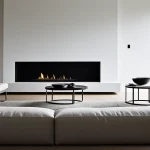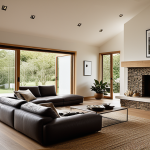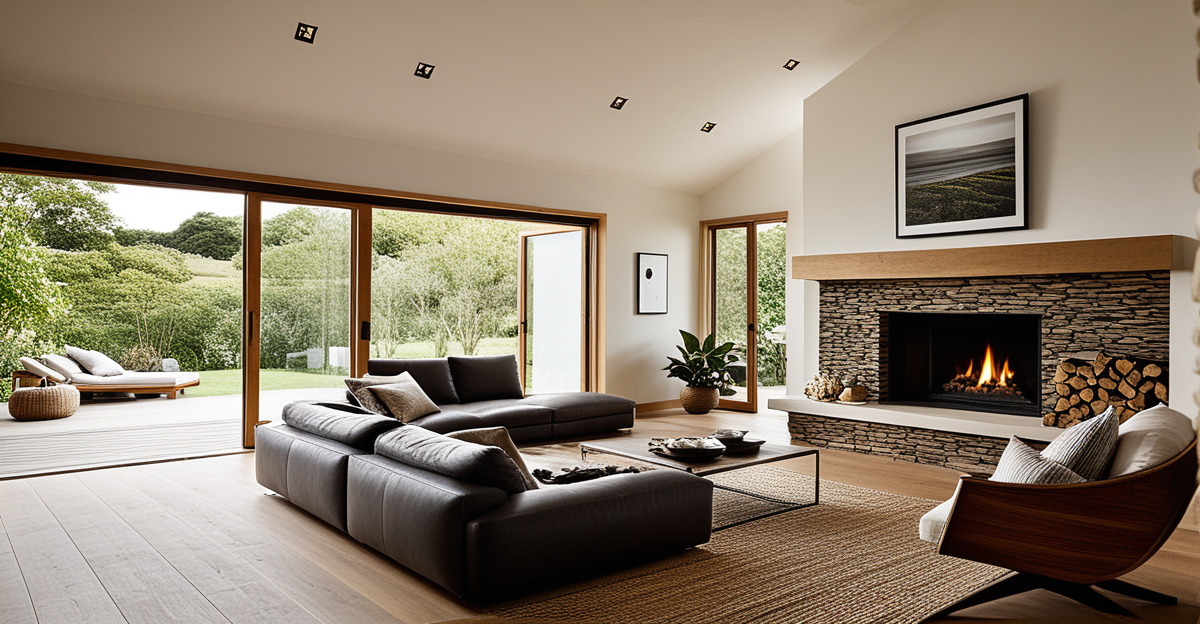Immediate Steps to Foster Home Tranquility
Creating a peaceful sanctuary begins with practical actions that deliver instant calm. Decluttering key spaces is one of the most effective relaxation tips to restore serenity. Clearing surfaces and organizing belongings reduces visual noise, helping your mind to relax and focus on the present.
Next, selecting calming color palettes for walls and decor significantly influences mood. Soft blues, gentle greens, or muted neutrals promote a sense of calm and reinforce your home tranquility. These shades visually soothe the mind and create a comforting environment conducive to relaxation.
Also to read : How Can We Create a Cozy Atmosphere with Minimalist Decor?
Finally, choosing cozy and comfortable furnishings enhances physical ease, which is vital for true relaxation. Plush cushions, soft throws, and furniture with inviting textures invite you to unwind and fully enjoy your home as a peaceful sanctuary. Each element, from tactile comfort to visual aesthetics, works together to support a tranquil atmosphere. Embracing these immediate steps helps transform your living space into an oasis of calm with minimal effort yet substantial impact.
Immediate Steps to Foster Home Tranquility
Creating home tranquility begins with simple yet impactful actions. One of the most effective relaxation tips is decluttering key spaces, such as living rooms and bedrooms. Removing excess items instantly reduces visual noise, helping to craft a peaceful sanctuary where the mind can relax. When surfaces are clear and organized, stress naturally diminishes, making the environment calmer.
Also to read : How Can Lighting Transform Your Home’s Ambiance?
Another pivotal factor is selecting calming color palettes. Soft shades like pale blues, muted greens, or gentle neutrals work well for walls and décor. These hues subtly influence mood by fostering calmness and reducing agitation, supporting your goal of a peaceful sanctuary. In color psychology, these options lower heart rate and ease anxiety, which aligns perfectly with creating home tranquility.
Finally, opting for cozy and comfortable furnishings enhances relaxation. Plush cushions, soft throws, and ergonomic seating invite you to settle in and unwind. Prioritize natural fabrics and textures to reinforce warmth and comfort. By focusing on these immediate steps — decluttering, color choices, and comfy furniture — your home evolves into a genuine relaxing retreat, setting the stage for deeper tranquility.
Incorporating Natural Elements for Serenity
Bringing biophilic design into your home significantly enhances home tranquility by reconnecting you with nature. To incorporate nature effectively, start by adding houseplants throughout living areas. These not only improve air quality but also create a calming green ambiance, which supports mental relaxation and stress reduction.
Using natural materials like wood and stone in furniture, flooring, or decorative accents deepens this effect. These textures and tones mimic outdoor environments, fostering a sense of grounding that complements the peaceful sanctuary you seek. For example, a wooden coffee table or stone vase can subtly invite nature indoors without overwhelming your space.
Maximizing natural light is another key element. Use light, breathable window treatments to allow sunlight to fill rooms, elevating moods and enhancing overall well-being. Natural light reduces reliance on artificial lighting, which can sometimes feel harsh and disrupting. Integrating these natural elements achieves a balanced and soothing environment, making your home a true refuge of calm and relaxation.
By thoughtfully blending greenery, organic materials, and daylight, you cultivate a tranquil atmosphere that powers your relaxation tips with the restorative energy of nature.
Incorporating Natural Elements for Serenity
Bringing nature indoors is a powerful way to boost home tranquility. One effective method is to incorporate houseplants throughout your living spaces. Houseplants not only add visual interest but also improve air quality and create a calming atmosphere, directly supporting a peaceful sanctuary. Popular choices include snake plants, pothos, and peace lilies—each easy to care for yet impactful in softening a room’s ambiance.
Another key strategy within biophilic design is using natural materials such as wood and stone. These organic textures bring warmth and grounding energy, contrasting with synthetic elements that often feel sterile. Wooden furniture, stone accents, or woven baskets all contribute to a connection with nature, which fosters relaxation.
Maximizing natural light is equally important. Thoughtful window treatments—like sheer curtains—allow sunlight to fill the room gently without glare. This enhances mood and supports the body’s natural rhythms, which is a core goal among these relaxation tips. Overall, by integrating greenery, natural textures, and ample daylight, you create an environment where tranquility arises effortlessly.
Enhancing Lighting for Mood and Comfort
Creating a calming atmosphere hinges greatly on thoughtful lighting for relaxation. Warm, adjustable lighting solutions are key; they allow you to tailor brightness to your mood and time of day, fostering a peaceful sanctuary. For instance, dimmable LED bulbs provide soft, gentle light that soothes rather than startles, helping you transition smoothly from activity to rest.
Candles and lamps add a tactile, intimate touch. Their flickering glow naturally relaxes the mind and encourages a slower pace. Using these alongside overhead lights softens the ambiance, making rooms feel cozier and more inviting, essential for anyone seeking home tranquility.
Maximising daylight is equally important. Natural light elevates mood and increases comfort, reinforcing many relaxation tips. Use sheer curtains or blinds to diffuse sunlight, maintaining brightness without harsh glare. This balance supports well-being by syncing your environment with natural rhythms.
By combining warm, soft lighting sources with ample natural light, you create spaces that nurture both physical comfort and mental ease. These lighting strategies transform an ordinary room into a serene retreat where relaxation becomes effortless and deeply restorative.
Enhancing Lighting for Mood and Comfort
Creating the right lighting for relaxation is essential to cultivating a calming atmosphere in your home. Start by choosing warm, adjustable lighting solutions that allow you to tailor brightness according to the time of day and activity. For instance, dimmable LED bulbs offer flexibility, fostering a soothing environment that supports home tranquility.
In addition to overhead lighting, incorporating candles and lamps enhances the sense of comfort. Candles provide a gentle flickering light that naturally relaxes the mind, while soft lamps distribute light evenly without harsh shadows. This combination gently invites you to unwind and promotes a peaceful sanctuary feeling.
Maximizing daylight further uplifts moods and energizes your space. Strategically placing mirrors opposite windows or opting for light, breathable curtains helps increase natural light penetration, connecting with a wellbeing boost. Natural daylight balances artificial lighting, creating a harmonious ambiance necessary for effective relaxation.
Together, these approaches to lighting do more than brighten a room—they shape the emotional tone of your environment, making your home a truly restorative retreat. Prioritizing soft lighting and thoughtful illumination supports deeper restful moments and enhances overall comfort.
Immediate Steps to Foster Home Tranquility
Achieving home tranquility hinges on targeted, effective actions. One top relaxation tip is decluttering key spaces like bedrooms and living rooms. This reduces distractions and visual noise, instantly calming the mind and reinforcing a sense of a peaceful sanctuary. Clear surfaces invite clarity and minimize stress triggers.
Choosing calming color palettes is equally crucial. Opt for soft blues, muted greens, or warm neutrals on walls and décor, as these hues lower anxiety and promote relaxation. These colors create soothing environments that naturally support home tranquility without overwhelming senses.
Finally, investing in cozy and comfortable furnishings completes the transformation. Prioritize plush cushions, soft throws, and ergonomic seating to enhance physical comfort—essential for mental ease. Textured fabrics and inviting materials encourage relaxation and sustained peace.
By combining these three strategies—decluttering, serene color schemes, and comfy furnishings—you immediately foster a resting place that nurtures both mind and body. Applying these relaxation tips turns any home into a genuine peaceful sanctuary, where tranquility is not just a wish but a daily reality.






